St John’s Church History
Take a Virtual Tour inside the church or explore the Church Features, Church Timeline, the Church Graveyard with links to the Jane Austen family and the War Graves. There is a summary of the church’s history in this trifold leaflet.
Church Features
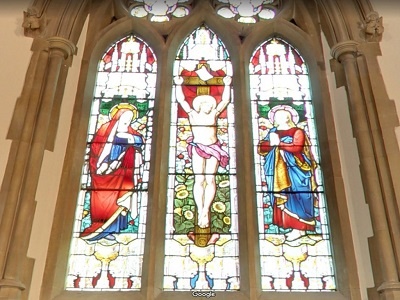
The East Window shows the Crucifixion with Mary and St John the Evangelist, the writer of St John’s Gospel. The ram is the symbol of St John the Baptist. This window is in memory of Francis, the eldest son of Revd George Austen, and dates from 1885.
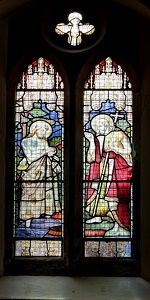
The South Window in the Sanctuary shows the Baptism of Jesus by St John the Baptist. This window is in memory of Louisa Lane Austen, the wife of George Austen, and dates from 1895.
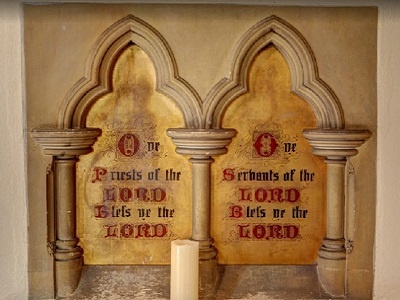
There are two plaques on the north wall of the Sanctuary giving words of caution and admonishment from the Psalms to priests.
On the west wall in the Sanctuary there are two boards showing the Ten Commandments.
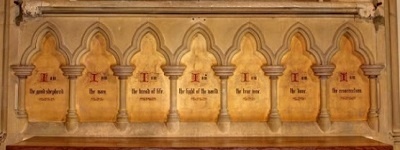
Above the Lord’s Table are the ‘I AM’ sayings of Christ from the Gospel of St John
In the intricate roof structure in the Sanctuary there is a Victorian shield.

There are twelve sculptured faces on the columns in the Nave.
Perhaps these faces represent the disciples, but one is the head of a woman. There is a church in Chichester, now a public house, opposite the Cathedral, with similar faces.
Church Timeline
1818: A parliamentary act allows the building of new churches in areas where there is a large enough population at least two miles from an existing church
1837: On 29th August, in the year Queen Victoria ascended to the throne, the Revd. G R Mountain of Havant and Revd W Norris of Warblington made an application to build a church at Red Hill in Rowlands Castle following pledges of £783 by local people. Mrs Harriet Dixon, wife of Charles, owner of Stansted House, laid the foundation stone on 31 August
1838: The church was consecrated by Charles Sumner, the Bishop of Winchester, on 12 July
The original church consisted of a cruciform shape which included:
- the Nave – the central seating area from the first step to the crossing opposite the porch
- the Chancel – now a raised open area, with a moveable Lord’s Table
- the Sanctuary – the area beyond the wooden rails containing the original Lord’s Table
1853: The north and south aisles were added
1866: A Rector was appointed to the living of Rowlands Castle
1909: First organ installed
1919: The War Memorial was dedicated by the Bishop of Southampton
1929: The Nave was extended west beyond the line from the porch to the north wall
1968: Current organ installed (originally built in 1933)
1987: Church redecorated, the front pews were removed and carpet laid
2008: Latest modernisation creating today’s flexible space
Church Graveyard
Saint John’s church has an historic connection with Jane Austen’s family. There are five graves of her family in the churchyard.
George Heathcote Austen
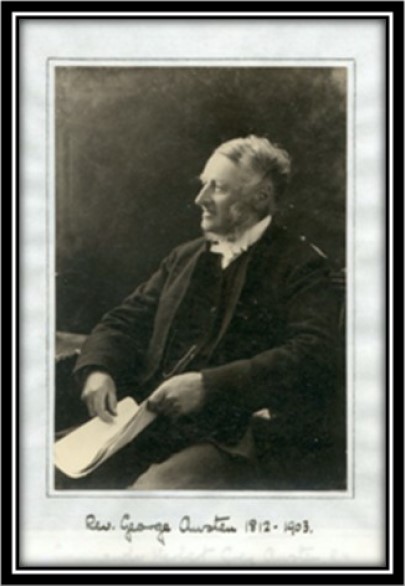
George was the nephew of Jane Austen the novelist, and a rector here for 41 years between (1856-1897). He was the son of Sir Francis William Austen CMG, (1774-1865), Admiral of the Fleet, who is buried in Wymering Church.
Sir Francis was Jane Austen’s brother and said to be the inspiration for the character William Price in ‘Mansfield Park ’. Sir Francis and his wife Mary had ten children of which George was their third son.
Louisa Tragett
George married Louisa in July 1851, They had five children, two of whom, Francis and Ernest, are buried with their parents.
Francis George Heathcote Austen
(1857-1885)
Francis never married and died aged 28, shortly after returning from India, where he had been working.
Ernest Leigh Austen (1858 – 1939)
Ernest following family tradition, entering the Navy as a cadet in January 1871, retiring as a Commander in December 1903.
Rose Clarice Bowgen
Rose married Ernest in June 1911. They had no children.
War Graves
The Commonwealth War Graves Commission has designated four war graves at St John’s Church
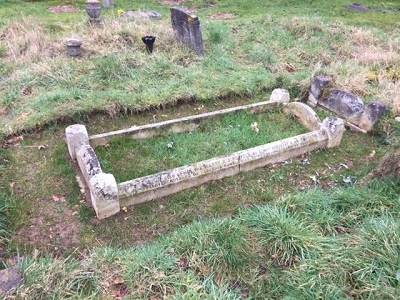
Ex RAF Flight Sgt Harry A.J Powell
WW2
Row G, Plot 10
Died: 23rd June 1943, aged 35
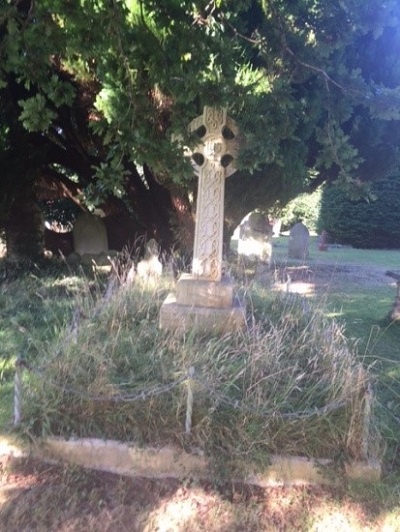
Major Flight Lft Frederick Fitzwygram BT, MC, Scots Guards
WW1
Plot 34 under Cypress Tree
On 18 Dec 1914 he received a serious shrapnel wound in the head and on 17 May 1915 he was wounded again during The Battle of Festubert in a raid on German trenches and taken prisoner and interned by the Germans in Belgium. Although initially reported as missing he was eventually repatriated on 26 Dec 1918. He died 5 May 1920 aged 35 as a casualty of the Great War. His family owned the Leigh Park Estate and his name is on his family’s grave in the churchyard.
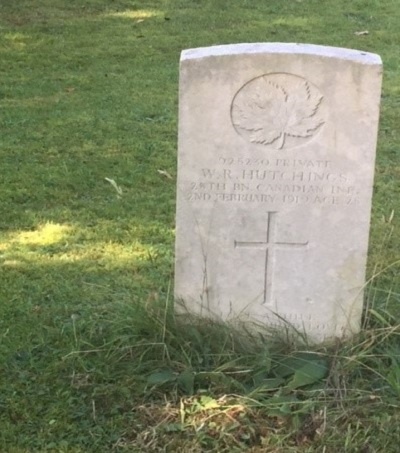
Pte W R Hutchings
28th Italian Canadian Infantry
WW1
Died: 2nd February 1919 aged 28 Area A. Behind Cypress Tree
(Manor Lodge Road side)
He was the son of John and Eleanor Kate Hutchings of Rowlands Castle.
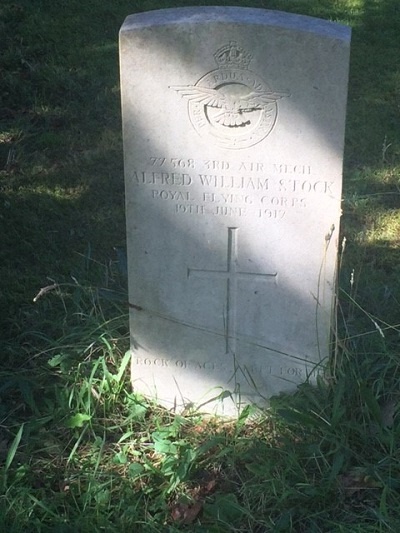
Air Mech Alfred William Stock
Royal Flying Corps
WW1
Died: 19th June 1917
Area A. Behind Cypress Tree
(Manor Lodge Road side)
There are three further graves, as yet undesignated by the Commonwealth War Graves Commission
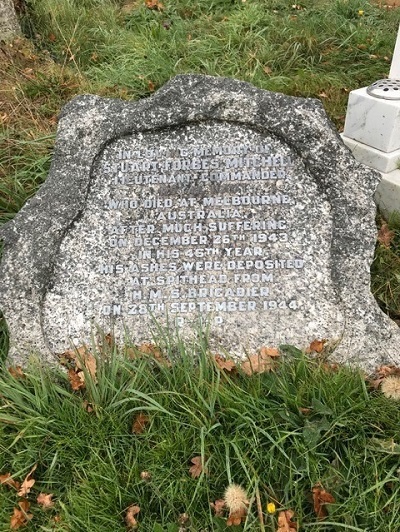
Lt. Cmdr Stuart Forbes Mitchell RN
WW2
Row F, Plot 23
He died after a long illness on 26 Dec 1943 in Melbourne aged 46. His ashes were scattered off Spithead from HMS Brigadier on 28 Sep 1944, and a headstone in his memory is in the churchyard.
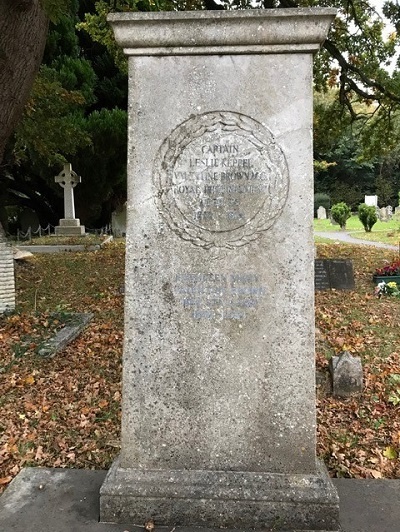
Captain Leslie Keppel Valentine Brown MC
Royal Irish Regiment
WW1
Row A, Plot 4
Died: 3rd July 1924, aged 36
He died on 3 Jul 1924 aged 36 (from TB, exhaustion and heart failure as result of WW1). He was an old boy from Portsmouth Grammar School and served throughout WW1, seeing service in France, Gallipoli, Serbia, Egypt and Salonica.
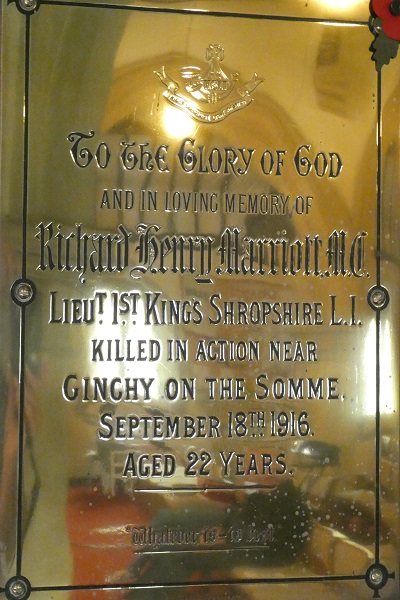
Lt Richard Marriott, MC
1st Kings Shropshire Light Infantry
WW1
The citation for his Military Cross reads:
‘For conspicuous gallantry and ability on 9th August, 1915, at Hooge, when the enemy had blown in the trenches near the crater, leaving a considerable gap in this part of the line, Second Lieutenant Marriott on his own initiative collected a few men and a machine gun and held this line under heavy shell fire till dark, when he was reinforced. He was twice wounded before being relieved, and set a fine example to his men.’
He was killed in action near Ginchy on the Somme on 18 Sep 1916 aged 22 and his grave is in the Guards Cemetery at Lesbœufs, France. There is a brass plaque to his memory in St John’s Church where his late father had served as Rector.
There is another war grave, near to the footpath leading to the church, where lies Colonel Arthur Robert Austen CMG (1860 – 1939) of the King’s Shropshire Light Infantry. Arthur married Rose Price de Teissier, whose father was Henry Price, 4th Baron De Teissier. They married on 7th June 1891. Rose does not appear to have been buried with her husband.
Their third son, Arthur Neville Austen, died of wounds in 1918 and was awarded the Military Cross in 1918 (posthumously) for distinguished service in France and Flanders. He is buried in a war cemetery in France.
